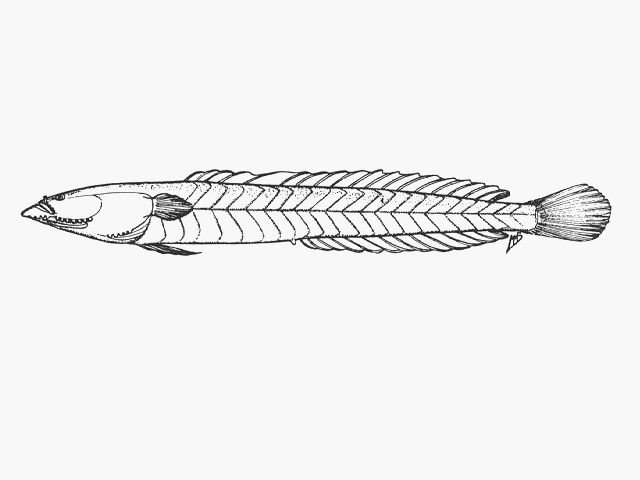
|
Kraemeria samoensis Steindachner, 1906 Samoan sand dart |

|
|
photo by
SFSA |
| Family: | Kraemeriidae (Sand darters) | |||
| Max. size: | 3.5 cm TL (male/unsexed) | |||
| Environment: | reef-associated; freshwater; brackish; marine; depth range 0 - 5 m | |||
| Distribution: | Indo-Pacific: East Africa to the Society Islands (Ref. 1602). | |||
| Diagnosis: |
Dorsal spines (total): 5-6; Dorsal soft rays (total): 14-14; Anal spines: 1-1; Anal soft rays: 13-13. Diagnosis: Characterized by translucent whitish colour with brown speckling and reddish smudge on occipital region; broadly separated spinous and soft portions of dorsal rays, fully connected by membrane, a broader gap between fifth and sixth dorsal spines compared to gap between previous spines; fourth to seventh pectoral-fin rays branched; pelvic fins separated to base with branched rays; 10 cirri on lower edge of gill cover instead of scalloped margin; depth of body 8.5-10.2 times in standard length, head length 3.9-4.3 in standard length; narrow interorbital space, less than half of eye diameter (Ref. 90102). Description: Snout length, eye to tip of chin, about 3.5 times in head length; front nostril a narrow tube over lip; narrow skinny flap with escalloped edge along above maxilla, one on side of chin to preopercle margin, another along lower opercular margin; with 6-7 flaps on the lower edge of preopercle, 5-6 flaps on lower edge of operculum; mouth oblique, maxilla to below eye, chin very prominent, mouth aperture dorsal; minute teeth in 2-3 series in upper and 1-2 in lower jaw; tongue bilobed, deeply forked (Ref. 404, 90102). Gillopening forward to below preopercle, isthmus narrow; gillrakers 0+9, gillrakers fine points (Ref. 404, 90102). Dorsal fin with 5 spines and 14 soft rays; anal fin with 1 spine and 13 soft rays; pectoral fin with 7-9 rays; pelvic fin with 1 spine and 5 soft rays; dorsal-fin origin 2.0-2.2 times further from caudal-fin base than snout tip, the 5th spiniform ray widely separated, last ray double; anal-fin origin below seventh and eighth dorsal ray, about midway between caudal-fin base and eye, last ray double; all dorsal and anal rays simple; pectoral fin with lobate base, 2 upper rays simple, sometimes lowest also, and end of fin reaches below about second dorsal-fin ray; pelvic fin bases united, the fins separate, all rays bifurcate, 4th and 5th longest, variably subequal, end of fin beyond pectoral apex, to below 3-4th dorsal-fin ray; caudal fin 1.8 times in head length, rounded, middle 8-9 rays branched (Ref. 404). Colouration: In life translucent, as preserved opaque; occasional specimens with irregular series of fine black dots on back from occiput to caudal (Ref. 404). |
|||
| Biology: | Inhabits sandy areas subject to strong wave action (Ref. 1602). Also reported from freshwater streams, mainly where freshwater streams ran dead in beach (Ref. 404, 4343). It feeds on polychaetes (Ref. 4343). Of no commercial interest but may be taken incidentally (Ref. 48316). | |||
| IUCN Red List Status: | Least Concern (LC); Date assessed: 10 March 2015 Ref. (130435) | |||
| Threat to humans: | harmless | |||